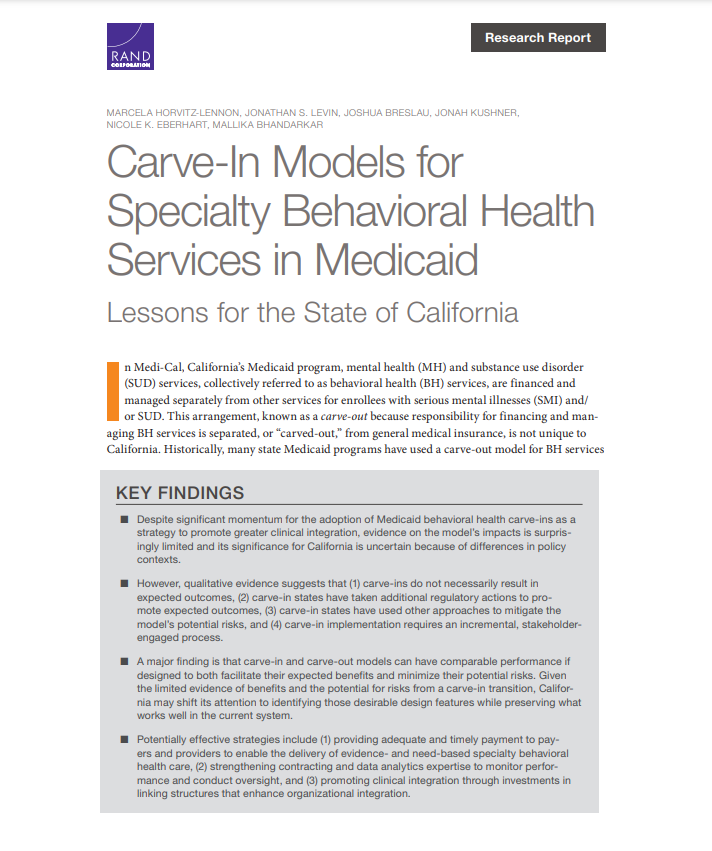Headline
Report analyzes experiences of and evidence on the behavioral health carve-in model in Medicaid and shares recommendations for California policymakers.
Context
Historically, state Medicaid programs have provided members with high behavioral health needs with services that were “carved out” of the programs’ overall medical benefit. These behavioral health benefits were usually managed by organizations — behavioral health organizations — with specialized behavioral health expertise. Medicaid programs are moving toward “carving-in” behavioral health financing to better integrate physical and behavioral health care services, improve health outcomes, and reduce costs. This report reviews the literature and summarizes quantitative and qualitative evidence on the benefits of the model, as well as provides recommendations for California state policymakers considering this transition for members with serious mental illness or substance use disorders.
Findings
The report found limited peer-reviewed and grey literature to support the benefits of the behavioral health carve-in model. Interviews with experts and state officials with experience of the model revealed that achieving desired integration outcomes requires significant effort by states, including regulatory action to support organizational changes that promote integration, regulatory, and contractual steps to mitigate potential risks of the transition (e.g., adverse selection). Interviewees also highlighted the importance of stakeholder engagement and additional investments in health information technology in the transition process.
Key design recommendations provided for California state policymakers considering the transition are organized by the following themes: payment, contracts, and regulatory and administrative processes.
Takeaways
The findings and recommendations in this report may support other state Medicaid programs considering a transition to behavioral health carve-in, or states seeking to enhance their existing model.

